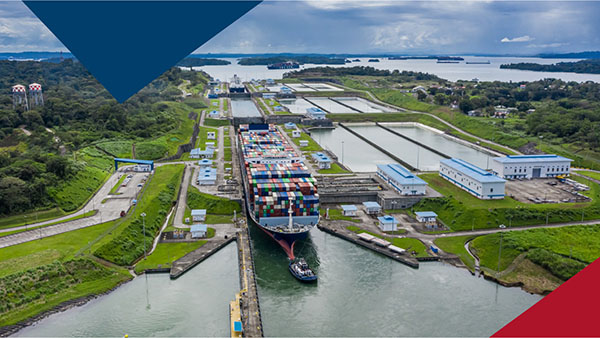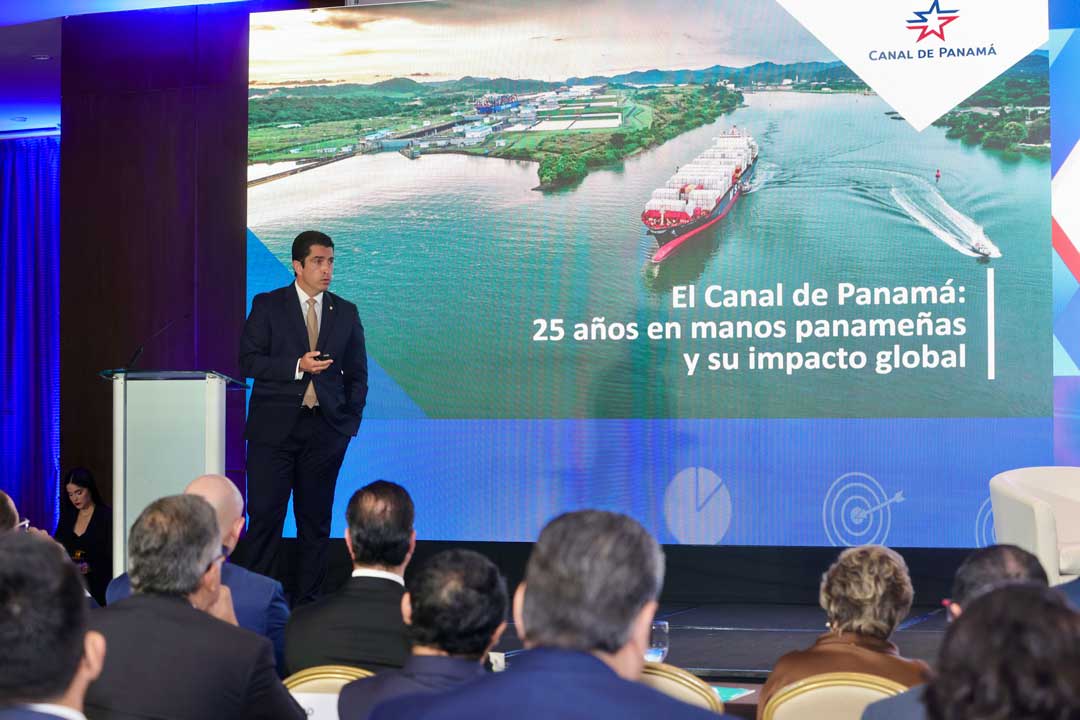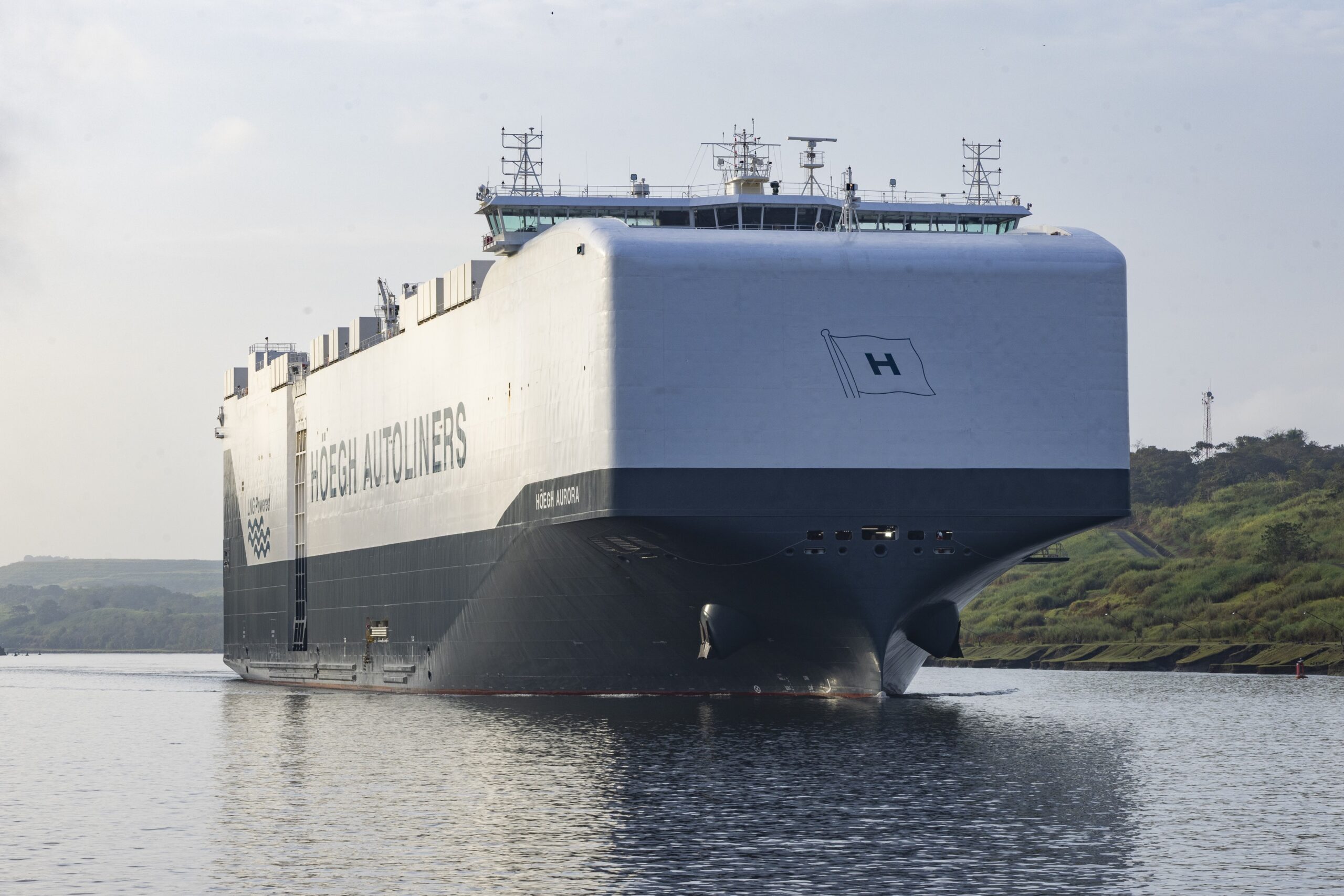The Panama Canal began its Fiscal Year 2022 (FY22) at the start of October, marking the end to a year of record-breaking traffic at the waterway and global supply chain disruptions worldwide. To mark the occasion, we held a Q&A with the leader of the Panama Canal, Administrator Ricaurte Vásquez Morales, to learn about the waterway’s performance in FY21, global supply chain constraints, carbon neutrality next steps and more. See his responses below.
 The Panama Canal saw record tonnage in 2021 fiscal year (FY21). Which segments and corresponding trends in global trade drove this growth? Will this continue in FY22?Between October 2020 and September 2021, 516.7 million Panama Canal tons (PC/UMS) passed through the waterway, carried mainly by containerships (184.3 million PC/UMS tons), as demand for consumer goods increased sharply in the United States. We anticipate traffic levels for containerships will be similar in FY22, as high demand for containerized cargo imports in the U.S. continues. Across all traffic segments supported, liquefied natural gas (LNG) carriers registered the highest increase in tonnage through the waterway in FY21, with almost a third (31.4 percent) more LNG carried through the Panama Canal compared to the previous year. We also saw the highest ever LNG transits and tonnage facilitated by the Panama Canal team overall this year, no small feat given the segment only began transiting the waterway for the first time after the completion of the Panama Canal Expansion in June 2016. This increase was largely due to record low temperatures during the winter in Asia, heightened demand for energy during what was already peak season. In addition, grain exports through the Canal increased as U.S. exporters meet soybean demand to feed livestock and poultry in China. We were able to accommodate this shift in the market by staying flexible with our transit reservation system and operations. In the past five years, our team has gained tremendous experience supporting and adapting to the needs of the segment, which has solidified the Panama Canal as a safe, reliable route for LNG. As more LNG terminals in the East and Gulf Coasts of the U.S. open or expand their operations and increase exports to Asia, we expect the segment will only continue to rely on the waterway more for at least the next three years.How did the Panama Canal mitigate the continued impact of COVID-19 on operations? Despite the continued challenges our industry faced, the Panama Canal had a landmark year thanks to our world-class workforce and their commitment to serving world trade without interruption. I am incredibly grateful for those on our team who have gone to significant lengths to protect the health and safety of our workforce and that of our customers and their crews. We will continue to maintain safety measures, which have allowed the Canal to remain open without pausing transits enabling customers to continue delivering essential goods around the world.Challenges in the supply chain continue to affect ports across the world – how did the Panama Canal manage this in FY21?Going into FY21, we knew the residual impact of COVID-19 would continue to affect supply chains, and we readied our workforce for this situation. Between October 2020 and September 2021, containerized cargo imports to the United States grew 19 percent as consumers began to spend money saved during the pandemic. The lack of ships to supply this growing demand coupled with congestion issues at ports, and high freight rates tightened the supply chain. The Canal managed these shifts by keeping operations agile, forecasting market trends to ensure uninterrupted service to our customers, while keeping safety at the center of our operations. For example, the Canal made changes to accommodate larger ships, increasing the maximum allowable length (LOA) for vessels transiting the Neopanamax Locks in June 2021 to allow 96.8 percent of the world’s fleet of containerships to transit the Canal. In addition to the increased LOA, the Canal also maintained a 50-foot draft, the highest level allowed at the waterway, benefitting customers who were able to transport more cargo.While we have been able to stay agile and flexible to continue offering reliable service through this past year’s challenges, we have not lost sight of the future. Therefore, through the past year, the Canal continued to advance its commitments to the environment, through sustainability and innovation. Were there any significant changes in top routes and customers? Measured by tonnage carried, the top trade routes using the Panama Canal were the same year over year apart from the East Coast South America – Asia route, which replaced the East Coast U.S. – West Coast of Central America route. South Korea also rose in the ranks to become the fourth top user of the waterway this year, moving above Chile and preceded by the United States, China, and Japan.Does the Canal have plans to digitize its operations? Many are turning to technology as the answer to overcoming rising challenges across the industry, from global supply chain issues to climate change. To stay ahead, the Panama Canal will kick off a multi-year digital transformation program in FY22 that will change the future of our business. In lieu of expanding the Canal’s physical infrastructure, which would require costly and disruptive construction, our team will use technology to find new ways in which we can increase the value the Panama Canal offers to our customers and country. Over the next decade, we will invest approximately $500 million, including in advanced data analytics capabilities, so our team can better understand the needs of our customers, their long-term projections, and the services the Canal can offer to make their transit more efficient. In this transition, we will seek to gain visibility into the needs of not only shipping lines, but also the owner of the cargo and the final customers, leveraging real-time data to help us become more agile, enhance our quality of service, and continue to add value to the route. In FY21, the Canal announced plans to become carbon neutral by 2030. What progress has been made to accomplish this goal? What’s coming next?We are working on the roadmap outlining the specific steps that the Panama Canal will take to ensure we reach carbon neutrality by 2030, from how we generate electricity from renewable sources to migrating the Canal’s fleet to electric vehicles and hybrid tugboats. By the end of the decade, we expect to invest roughly $2.4 billion in equipment replacement and infrastructure modernization, as well as $2.8 billion in maintenance. Our team will also explore a pricing strategy that promotes the efficiency and low-carbon emissions of the ships that transit the waterway, as well as participate in the upcoming 2021 United Nations Climate Change Conference (COP26) and IMO Marine Environment Protection Committee (MEPC77) meetings. The Canal secured a 50-foot draft this past year. How will the Canal continue to guarantee a steady supply of water? We are still advancing our planned investment that will guarantee a steady draft of water at the Panama Canal for the next 50 years. We decided to reformulate the tender model for this long-term Water Management System Program in June 2021 to take into consideration the feedback received from the interested companies that participated in the prequalification process. We are currently working on evaluating the best alternative(s) considering cost-benefits, reliability and control, technical challenges, and social and environmental implications. The next step will be the production of conceptual designs. We chose this approach as it will reduce risk, improve cost estimates, and facilitate the technical evaluation of the proposals. In the meantime, the team will continue to offer transparency by sharing daily water levels at Gatun Lake and announce draft adjustments at least four weeks in advance.
The Panama Canal saw record tonnage in 2021 fiscal year (FY21). Which segments and corresponding trends in global trade drove this growth? Will this continue in FY22?Between October 2020 and September 2021, 516.7 million Panama Canal tons (PC/UMS) passed through the waterway, carried mainly by containerships (184.3 million PC/UMS tons), as demand for consumer goods increased sharply in the United States. We anticipate traffic levels for containerships will be similar in FY22, as high demand for containerized cargo imports in the U.S. continues. Across all traffic segments supported, liquefied natural gas (LNG) carriers registered the highest increase in tonnage through the waterway in FY21, with almost a third (31.4 percent) more LNG carried through the Panama Canal compared to the previous year. We also saw the highest ever LNG transits and tonnage facilitated by the Panama Canal team overall this year, no small feat given the segment only began transiting the waterway for the first time after the completion of the Panama Canal Expansion in June 2016. This increase was largely due to record low temperatures during the winter in Asia, heightened demand for energy during what was already peak season. In addition, grain exports through the Canal increased as U.S. exporters meet soybean demand to feed livestock and poultry in China. We were able to accommodate this shift in the market by staying flexible with our transit reservation system and operations. In the past five years, our team has gained tremendous experience supporting and adapting to the needs of the segment, which has solidified the Panama Canal as a safe, reliable route for LNG. As more LNG terminals in the East and Gulf Coasts of the U.S. open or expand their operations and increase exports to Asia, we expect the segment will only continue to rely on the waterway more for at least the next three years.How did the Panama Canal mitigate the continued impact of COVID-19 on operations? Despite the continued challenges our industry faced, the Panama Canal had a landmark year thanks to our world-class workforce and their commitment to serving world trade without interruption. I am incredibly grateful for those on our team who have gone to significant lengths to protect the health and safety of our workforce and that of our customers and their crews. We will continue to maintain safety measures, which have allowed the Canal to remain open without pausing transits enabling customers to continue delivering essential goods around the world.Challenges in the supply chain continue to affect ports across the world – how did the Panama Canal manage this in FY21?Going into FY21, we knew the residual impact of COVID-19 would continue to affect supply chains, and we readied our workforce for this situation. Between October 2020 and September 2021, containerized cargo imports to the United States grew 19 percent as consumers began to spend money saved during the pandemic. The lack of ships to supply this growing demand coupled with congestion issues at ports, and high freight rates tightened the supply chain. The Canal managed these shifts by keeping operations agile, forecasting market trends to ensure uninterrupted service to our customers, while keeping safety at the center of our operations. For example, the Canal made changes to accommodate larger ships, increasing the maximum allowable length (LOA) for vessels transiting the Neopanamax Locks in June 2021 to allow 96.8 percent of the world’s fleet of containerships to transit the Canal. In addition to the increased LOA, the Canal also maintained a 50-foot draft, the highest level allowed at the waterway, benefitting customers who were able to transport more cargo.While we have been able to stay agile and flexible to continue offering reliable service through this past year’s challenges, we have not lost sight of the future. Therefore, through the past year, the Canal continued to advance its commitments to the environment, through sustainability and innovation. Were there any significant changes in top routes and customers? Measured by tonnage carried, the top trade routes using the Panama Canal were the same year over year apart from the East Coast South America – Asia route, which replaced the East Coast U.S. – West Coast of Central America route. South Korea also rose in the ranks to become the fourth top user of the waterway this year, moving above Chile and preceded by the United States, China, and Japan.Does the Canal have plans to digitize its operations? Many are turning to technology as the answer to overcoming rising challenges across the industry, from global supply chain issues to climate change. To stay ahead, the Panama Canal will kick off a multi-year digital transformation program in FY22 that will change the future of our business. In lieu of expanding the Canal’s physical infrastructure, which would require costly and disruptive construction, our team will use technology to find new ways in which we can increase the value the Panama Canal offers to our customers and country. Over the next decade, we will invest approximately $500 million, including in advanced data analytics capabilities, so our team can better understand the needs of our customers, their long-term projections, and the services the Canal can offer to make their transit more efficient. In this transition, we will seek to gain visibility into the needs of not only shipping lines, but also the owner of the cargo and the final customers, leveraging real-time data to help us become more agile, enhance our quality of service, and continue to add value to the route. In FY21, the Canal announced plans to become carbon neutral by 2030. What progress has been made to accomplish this goal? What’s coming next?We are working on the roadmap outlining the specific steps that the Panama Canal will take to ensure we reach carbon neutrality by 2030, from how we generate electricity from renewable sources to migrating the Canal’s fleet to electric vehicles and hybrid tugboats. By the end of the decade, we expect to invest roughly $2.4 billion in equipment replacement and infrastructure modernization, as well as $2.8 billion in maintenance. Our team will also explore a pricing strategy that promotes the efficiency and low-carbon emissions of the ships that transit the waterway, as well as participate in the upcoming 2021 United Nations Climate Change Conference (COP26) and IMO Marine Environment Protection Committee (MEPC77) meetings. The Canal secured a 50-foot draft this past year. How will the Canal continue to guarantee a steady supply of water? We are still advancing our planned investment that will guarantee a steady draft of water at the Panama Canal for the next 50 years. We decided to reformulate the tender model for this long-term Water Management System Program in June 2021 to take into consideration the feedback received from the interested companies that participated in the prequalification process. We are currently working on evaluating the best alternative(s) considering cost-benefits, reliability and control, technical challenges, and social and environmental implications. The next step will be the production of conceptual designs. We chose this approach as it will reduce risk, improve cost estimates, and facilitate the technical evaluation of the proposals. In the meantime, the team will continue to offer transparency by sharing daily water levels at Gatun Lake and announce draft adjustments at least four weeks in advance.



